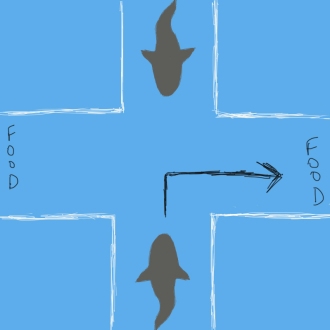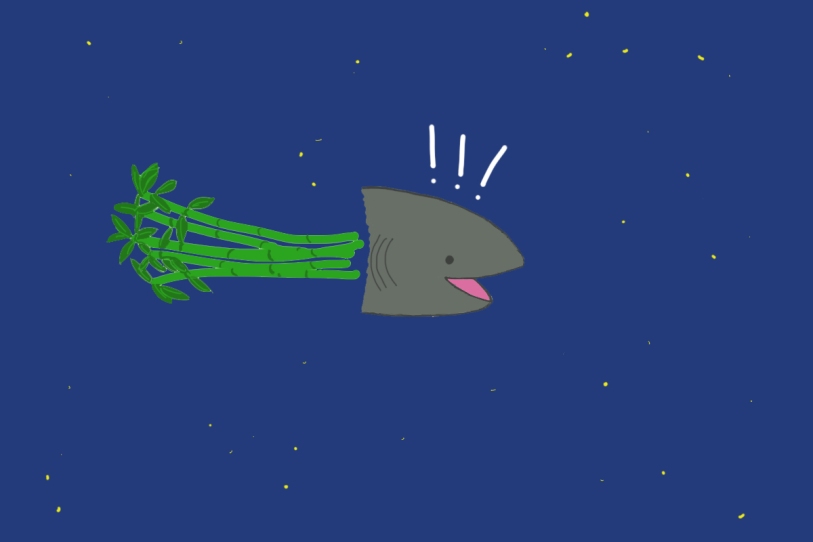Last year, Schluessel and Bleckmann (2012) published an article about ‘Spatial learning and memory retention in the grey bamboo shark (Chiloscyllium griseum)’. Here is a recap.
Why study this topic
To build on previous research that had looked at animals’ ability to learn spatial information, such as escape routes or landmarks, and keep it for later use. Compared to other fish, invertebrates, birds and mammals, memory retention without reinforcement hadn’t been investigated much in elasmobranchs (sharks and stingrays), even though their ecology suggest that such a capability would be advantageous. Also, they apparently “hold a key phylogenetic position for understanding brain evolution in jawed vertebrates”.
What they did
Eight captive 3 month old grey bamboo sharks were periodically placed in a four arm maze (2 starting compartments + 2 food holders) accompanied by external landmarks. One of the starting compartments was alternatively sealed off so as to create a T maze in each session.
There were 3 experimental groups designed to train sharks to use different spatial strategies. The training period ended when a certain learning criterion was attained.

Strategy: making a specific turn (always right OR left). The food’s goal position was modified according to the shark’s starting point.

Strategy: making a specific turn and/or using external landmarks. The starting compartment and the food’s position was always the same.

Strategy: not making a specific turn, so maybe using external landmarks. The food’s location was always the same, but the starting compartment changed.
To measure memory retention, they first subjected the sharks to “training breaks” (basically, there was no contact with the maze and no reinforcement) of varying lengths, i.e., 1, 2, 5 or 6 weeks. When the sharks were put back in the maze, they recorded the number of sessions needed for them to reach the learning criterion again.
What they found
The sharks were able to use either spatial strategy to remember the location of the food. Besides, they seemed to retain spatial information for up to 6 weeks, without having to re-learn it when put back in the maze, and with no behavioural reinforcement. The authors make several additional observations that unfortunately could not be supported by statistical data, due both to a small sample size for each group and “temporal constraints and holding facility issues”.
Even so, I think this study can be regarded as preliminary evidence for memory retention abilities in grey bamboo sharks, especially since their data does seem to mimic what has been observed for other fishes.
As suggested in the article, future research should explore long-term memory in elasmobranchs with larger sample sizes, possibly by testing for the presence of a cognitive map. I encourage everyone to take a look at their paper directly, as it contains many more details about their methods and results.
Reference


This is one of studies that while the result is not entirely surprising (it just makes sense that sharks are able to learn), is still really cool and I’m glad someone did it. Interesting that they say stingrays have have spatial memory too…
Indeed, though the focus was more on how long they can keep the information they learned. I didn’t really expand on that.